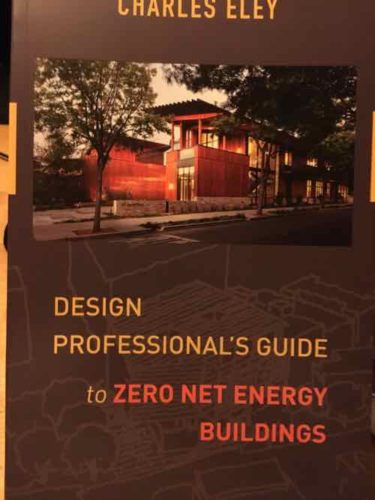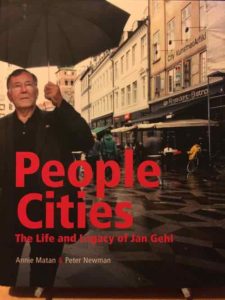Reading: Design Professional’s Guide to Zero Net Energy Buildings by Charles Eley
 Many of the books I receive each year are written for general consumption, filled with beautiful color photos and written for both professionals & non-professionals. This book, however, is written for design professionals. There are far more tables, charts & diagrams than photos — all in black & white. This is a technical book addressing a fascinating subject matter.
Many of the books I receive each year are written for general consumption, filled with beautiful color photos and written for both professionals & non-professionals. This book, however, is written for design professionals. There are far more tables, charts & diagrams than photos — all in black & white. This is a technical book addressing a fascinating subject matter.
From the publisher:
In the United States, direct energy use in buildings accounts for 39% of carbon dioxide emissions per year—more than any other sector. Buildings contribute to a changing climate and warming of the earth in ways that will significantly affect future generations. Zero net energy (ZNE) buildings are a practical and cost-effective way to reduce our energy needs, employ clean solar and wind technologies, protect the environment, and improve our lives. Interest in ZNE buildings, which produce as much energy as they use over the course of a year, has been growing rapidly.
In the Design Professional’s Guide to Zero Net Energy Buildings, Charles Eley draws from over 40 years of his own experience, and interviews with other industry experts, to lay out the principles for achieving ZNE buildings and the issues surrounding their development. Eley emphasizes the importance of building energy use in achieving a sustainable future; describes how building energy use can be minimized through smart design and energy efficiency technologies; and presents practical information on how to incorporate renewable energy technologies to meet the lowered energy needs. The book identifies the building types and climates where meeting the goal will be a challenge and offers solutions for these special cases. It shows the reader, through examples and explanations, that these solutions are viable and cost-effective.
ZNE buildings are practical and cost-effective ways to address climate change without compromising our quality of life. ZNE buildings are an energizing concept and one that is broadly accepted yet, there is little information on what is required to actually meet these goals. This book shows that the goal is feasible and can be practically achieved in most buildings, that our construction industry is up to the challenge, and that we already have the necessary technologies and knowledge.
Potential clients interested in the environment might also find the book helpful for educating them to work with their design professionals on a future project(s). Design Professional’s Guide to Zero Net Energy Buildings is available from the publisher, Left Band Books, and Amazon. I meant to check the AIA St. Louis bookstore, but didn’t get a chance.
— Steve Patterson
b
b
b
b



